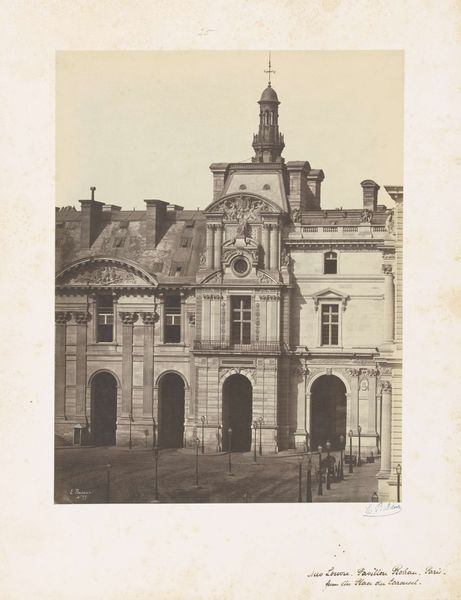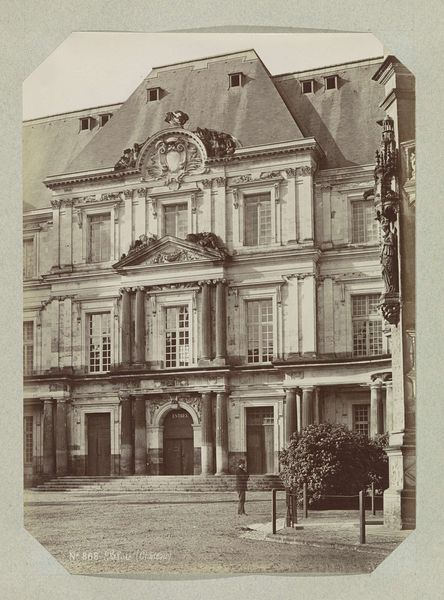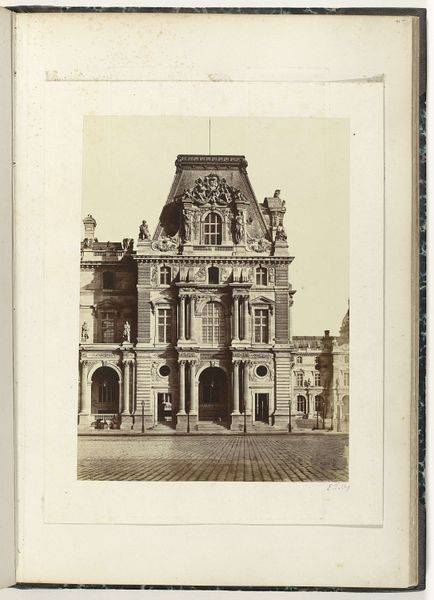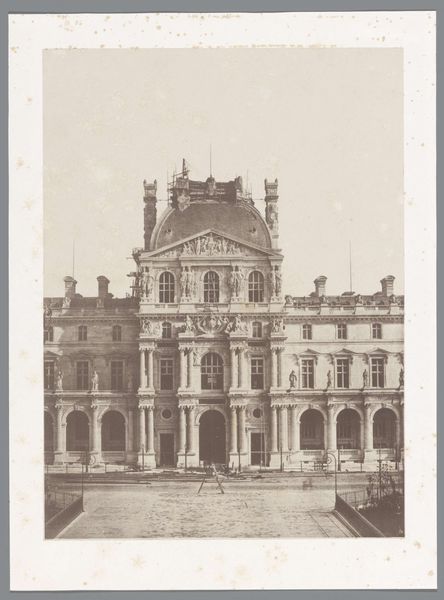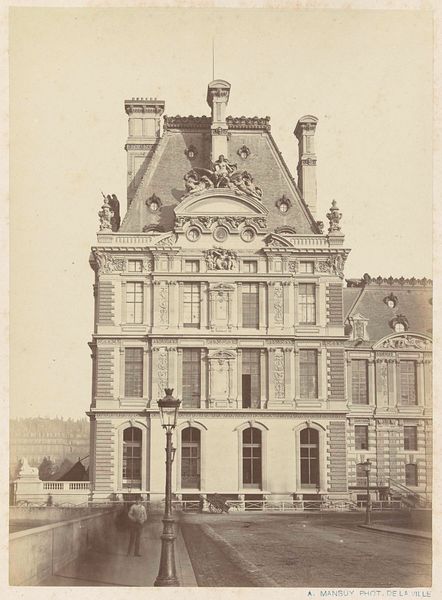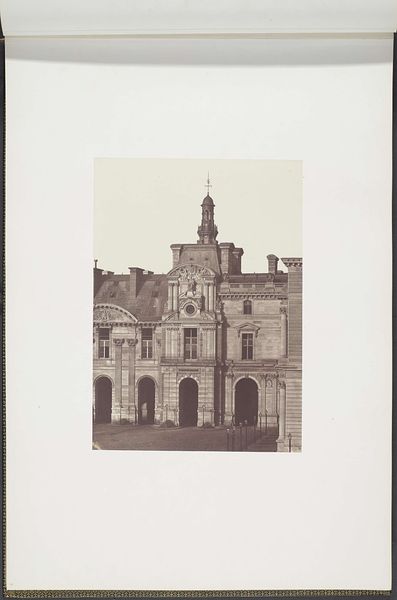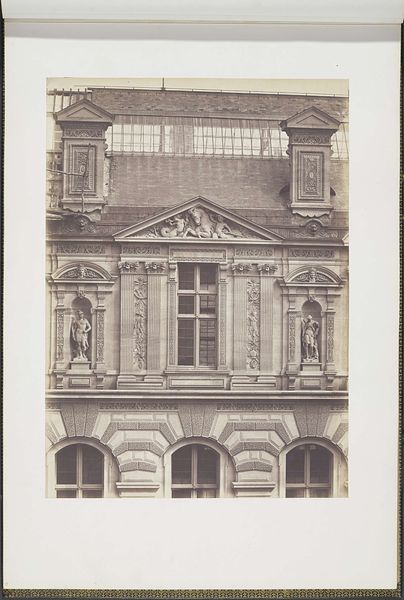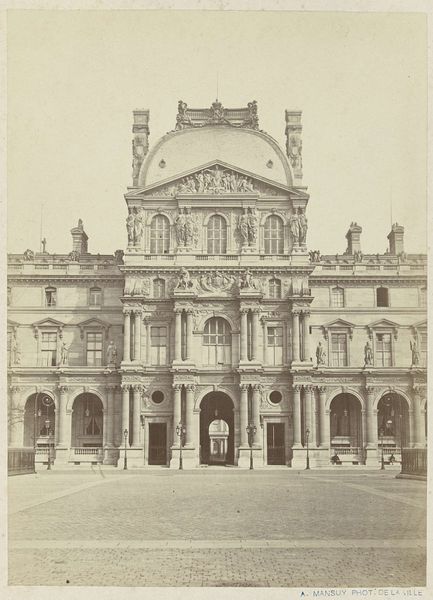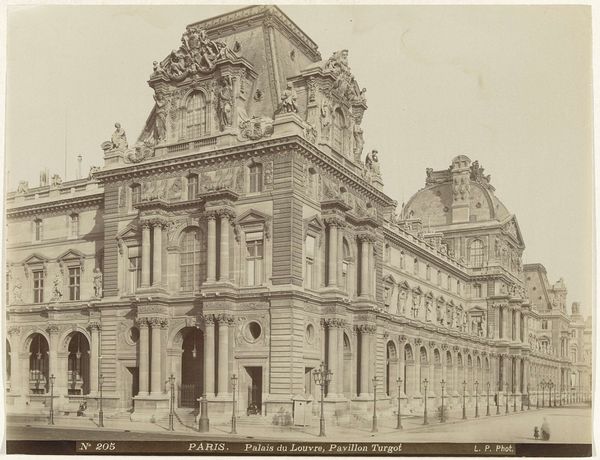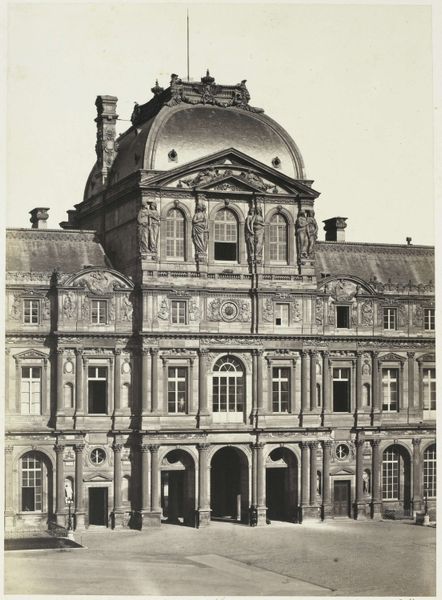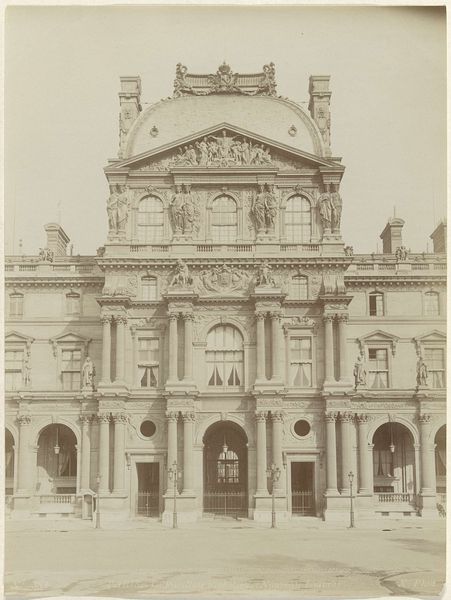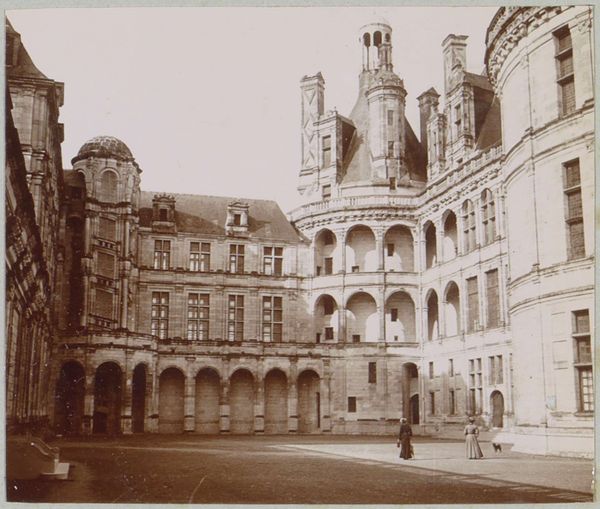
print, daguerreotype, bronze, photography, architecture
#
neoclacissism
#
16_19th-century
# print
#
french
#
landscape
#
daguerreotype
#
bronze
#
photography
#
france
#
19th century
#
men
#
cityscape
#
architecture
#
statue
Dimensions: 27.1 × 19.5 cm
Copyright: Public Domain
Curator: This striking photograph captures a portion of the Tuileries Palace in Paris. The artist, Edouard Baldus, created it between 1855 and 1857. It's an impressive display of early architectural photography. Editor: My immediate impression is one of solidity, and formality. The facade is presented almost as a geometric exercise – those repetitive windows, the strong verticals of the columns. But the details, the sculpture, offer visual relief. Curator: Indeed. Baldus excels in capturing the play of light and shadow on the architectural details, emphasizing the building’s intricate surface. Note the balance and symmetry employed here, echoing neoclassicist principles. The perspective centers the viewer, emphasizing the architecture and elevating the design, it's not necessarily human-centered. Editor: Right, it's about celebrating order. This photo was produced during the Second Empire, a time of significant urban restructuring in Paris led by Baron Haussmann. Baldus was employed to document these grand projects. Curator: So the photograph functions not merely as an aesthetic object but as a document of political power? Editor: Exactly. Photography played a vital role in promoting the Empire's achievements. This photograph shows a city reshaping itself as a stage for imperial power. Look at how clean the open space in front of the palace looks and is staged; no one is walking around which gives a more pristine architectural presence. Curator: Baldus masterfully manipulated light and composition to convey that message, reducing a sprawling, organic place to clear geometries to signal a "new" and supposedly rational modernity, as well as give symbolic representation to it. Editor: The detail of the sculptures and the overall image fidelity achieved is striking, considering the daguerreotype process used in his printmaking. The contrast of the creamy sky against the stone texture only emphasizes the material reality of this "project". Curator: Analyzing this, I'm intrigued how Baldus transforms a government architectural design and objective project of political ambition, into a potent artistic statement that draws on much more timeless architectural values and formal principles of beauty. Editor: And I see how this single image, captured with then-innovative techniques, can still speak volumes about ambition, both artistically and politically, in a transformative period of urban history.
Comments
No comments
Be the first to comment and join the conversation on the ultimate creative platform.
